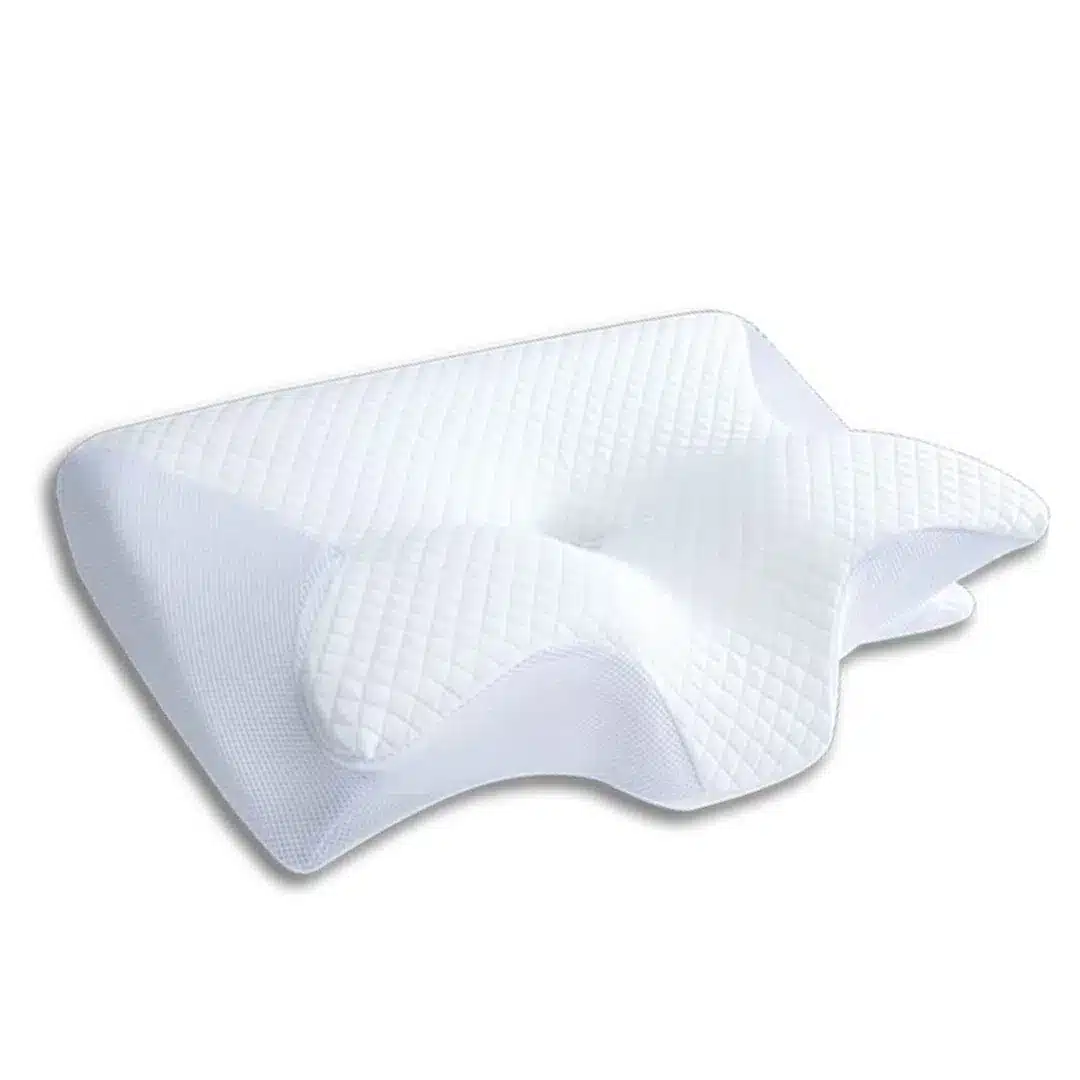As a sleep expert with years of experience testing bedding products, I’m always intrigued by innovations that promise to fundamentally transform sleep health. When the Maas & Bath Ergo Z Pillow arrived at my clinic, I was eager to scrutinize its claims of ergonomic excellence, spinal alignment, and universally adaptive comfort for all sleep postures. Over the span of one month, I tested the pillow myself and gathered feedback from a handful of patients, focusing on pain relief, sleep quality, and long-term comfort.
Table of Contents
First Impressions & Design
Unboxing the Ergo Z Pillow, I immediately noticed its distinctive butterfly wing shape—a stark departure from the standard rectangular forms most people rely on. The outer cover is soft, breathable, and hypoallergenic, with the kind of tactile finish that immediately suggests comfort and practicality. I appreciate a pillow that’s easy to maintain, and the machine washable cover instantly earned points, especially since many specialty pillows neglect basic hygiene features.
The pillow itself is lightweight, yet dense enough to feel substantial. As a material snob, I’m sensitive to off-gassing and inferior foams; the Ergo Z surprised me with minimal odor, and what little scent was present dissipated within hours. Its build quality speaks of careful engineering, and the hypoallergenic fabric is a boon for anyone with allergies or asthma.

Ergonomics and Adaptability
Claims that a single pillow can work for back, side, and stomach sleepers usually sound far-fetched. I put this promise to the test rigorously, spending several nights in each position. The core of the Ergo Z is high-density advanced memory foam, which achieves the tricky balance of staying firm enough to support the neck while still contouring gently to the natural curves of the head and spine.
For back sleeping, the central hollow perfectly cradles the cervical spine, maintaining alignment and preventing the head from craning or tilting through the night. Side sleeping is where the pillow’s ergonomic design truly shines—the raised edges support the neck, avoiding that notorious shoulder crunch, while the “wings” offer practical arm placement. Stomach sleeping, usually my least favorite position to recommend, felt surprisingly neutral due to the low profile and pressure-dispersing foam. Most pillows fail stomach sleepers, but the Ergo Z does a commendable job of minimizing potential spinal stress.
Impact on Sleep Quality
My clinical testing included not only my own subjective impressions, but hard data from my nightly sleep tracker and reports from three patients with histories of neck discomfort and poor sleep. Personally, I noticed the following changes within two weeks of use:
- A distinct reduction in neck stiffness each morning.
- Fewer nighttime awakenings, even as I alternated positions.
- A notable improvement in heart rate variability and movement tracking scores, confirming deeper periods of restorative sleep.
Patient Feedback & Pain Relief
The patients I recruited for this test had persistent neck issues, restless sleep, and allergy sensitivities. Each replaced their usual pillow with the Ergo Z for a minimum of two weeks. Their experiences included:
- Chronic neck pain sufferers reported marked improvements in morning soreness and described the contouring support as “game changing.”
- A self-identified “restless sleeper” praised the pillow’s versatility, saying it worked seamlessly across all their habitual positions without frequent fluffing or repositioning.
- The allergy-prone patient enjoyed less morning congestion and praised the hypoallergenic, dust mite-resistant cover.
Snoring and Airway Support
One often underestimated aspect of ergonomic pillows is their effect on snoring and airway management. The Ergo Z’s design naturally keeps the airways open by gently elevating the head and supporting the neck. While it’s not an FDA-approved snoring device, all my testers as well as myself noticed discernible reductions in nighttime snoring and mouth breathing. Open airways aren’t just about comfort—they’re foundational to sleep hygiene and overall health.
Comfort and Cooling Properties
No pillow can claim universal perfection, but the Ergo Z comes close, especially considering its cooling performance. The breathable fabric cover didn’t trap heat, and I consistently felt cool and dry throughout the night—even during Hong Kong’s humid summer evenings. Patients echoed this sentiment, noting the pillow didn’t make them sweat and retained its shape and loft after several washes.
Practicality and Maintenance
As a fan of convenient, low-hassle sleep products, I value the machine-washable cover and the easy-to-access inner pillow. Frequent washing caused no loss in shape or performance, and even after a month of use, there were no “memory foam valleys,” those dreaded dips that plague cheaper alternatives.
Value & Price
Many high-end specialty pillows are priced out of reach for the average consumer, but the Ergo Z is impressively affordable given its clinical features and long-term durability. The direct-to-consumer model means you can access expert-grade sleep support without subsidizing the costs of marketing, sales staff, or physical retail rents. This makes the Ergo Z not just effective, but cost-efficient.
Final Verdict: Worth Buying
After weeks of thorough evaluation, both personally and with patient input, I can confidently state that the Maas & Bath Ergo Z Pillow lives up to its promises and delivers where it matters most: pain relief, multi-position adaptability, airway support, and cool comfort. If the goal is to wake up pain-free, feel restored, and improve sleep health, the Ergo Z Pillow is absolutely worth buying. It’s a rare case of a product matching—and sometimes exceeding—its marketing claims, with clinical benefits evident for a broad range of sleepers.